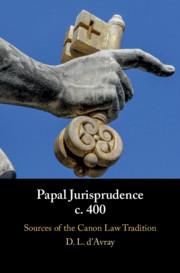Book contents
- Papal Jurisprudence c. 400
- Papal Jurisprudence c. 400
- Copyright page
- Dedication
- Contents
- Acknowledgements
- Abbreviations
- Manuscript Sigla
- 1 Introduction
- 2 The State of Research: Caspar and After
- 3 Texts and Manuscripts
- 4 Rituals and Liturgy
- 5 Status Hierarchy
- 6 Hierarchy of Authority
- 7 Celibacy
- 8 ‘Bigamy’
- 9 Marriage
- 10 Monks and the Secular Clergy
- 11 Heretics: Novatians, Bonosians, and Photinians
- 12 Heretics: In the Shadow of Augustine
- 13 Penance
- Epilogue
- Select Bibliography
- Index
8 - ‘Bigamy’
Published online by Cambridge University Press: 13 December 2019
- Papal Jurisprudence c. 400
- Papal Jurisprudence c. 400
- Copyright page
- Dedication
- Contents
- Acknowledgements
- Abbreviations
- Manuscript Sigla
- 1 Introduction
- 2 The State of Research: Caspar and After
- 3 Texts and Manuscripts
- 4 Rituals and Liturgy
- 5 Status Hierarchy
- 6 Hierarchy of Authority
- 7 Celibacy
- 8 ‘Bigamy’
- 9 Marriage
- 10 Monks and the Secular Clergy
- 11 Heretics: Novatians, Bonosians, and Photinians
- 12 Heretics: In the Shadow of Augustine
- 13 Penance
- Epilogue
- Select Bibliography
- Index
Summary
‘Bigamy’ – the ban on twice-married men or husbands of widows becoming clerics – was another way of marking out the clergy from ordinary people. For the latter, remarriage after the death of a spouse was unproblematic, but it was an absolute bar to a clerical career. The underlying rationale takes one deep into the realm of symbolism.
- Type
- Chapter
- Information
- Papal Jurisprudence c. 400Sources of the Canon Law Tradition, pp. 152 - 170Publisher: Cambridge University PressPrint publication year: 2019

